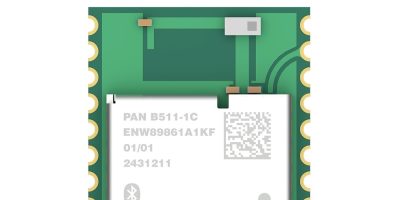Renesas has announced that it has successfully obtained PSA Certified Level 1 certification with the European Cyber Resilience Act (CRA) compliance extension for three of its latest microcontroller Groups (MCUs). This certification, evaluated by Applus+ Laboratories, marks a significant step in Renesas’ commitment to cybersecurity and compliance with upcoming European regulations.
The certified RA4L1 MCU Group features low power, 32-bit microcontrollers (MCUs) based on the Arm Cortex-M33 (CM33) core with Arm TrustZone® technology, delivering an ideal balance of low voltage operation, low power consumption and high performance. The integrated low power features, advanced security engine, and communication interfaces make these devices ideal for many Industrial Automation, Home Appliances, Smart Home, Consumer, Building/Home Automation and Medical/Healthcare applications.
The certified RA8E1 and RA8E2 MCU Groups, both based on the Arm Cortex-M85 (CM85) architecture, are designed for a wide range of applications including industrial automation, home appliances, smart home systems, and medical devices. The RA8E1 MCU Group features Arm Helium technology for Vision and Voice AI applications, while the RA8E2 MCU Group incorporates a Graphics LCD for advanced Human-Machine Interface (HMI) solutions.
PSA Certified, a leading global security framework established by Arm and industry partners in 2019, has introduced an extension to its Level 1 certification that addresses the compliance requirements of the upcoming European Cyber Resilience Act. This new regulation, set to become mandatory in December 2027, will apply to a broad spectrum of digital products.
“We’re proud to be at the forefront of IoT security,” said Daryl Khoo, Vice President of the Embedded Processing Marketing Division at Renesas. “Achieving PSA Certified Level 1 with the CRA compliance extension demonstrates our commitment to providing our customers with secure, future-proof solutions.”
“With the continued adoption of edge AI devices across all markets and new government regulations coming into effect, security must be prioritised to ensure trusted AI deployment, protecting both businesses and consumers,” said David Maidment, senior director, market strategy at Arm. “Initiatives like PSA Certified are fundamental to driving robust device security and we congratulate Renesas on these new certifications which showcase security leadership in the age of AI.”
Jose Ruiz, Cybersecurity BU Director at Applus+ Laboratories, added, “We are committed to providing cybersecurity evaluation solutions that boost market trust and help vendors comply with regulatory requirements. Reducing fragmentation in cybersecurity certification is key, and we welcome PSA Certified’s efforts to align with other private schemes as well as governmental requirements.”
PSA Certified Level 1 also offers additional extensions to comply with the European RED directive and the UK PSTI regulation, both applicable to connected and IoT products, further enhancing its value to manufacturers in meeting global security standards. In addition, Renesas has achieved PSA Certified Level 3 RoT Component certification for the RA8D1, RA8M1 and RA8T1 MCU Groups, further demonstrating Renesas’ long-term commitment to security, including physical protections for the Root of Trust. Visit the Renesas IoT security page for more information.







